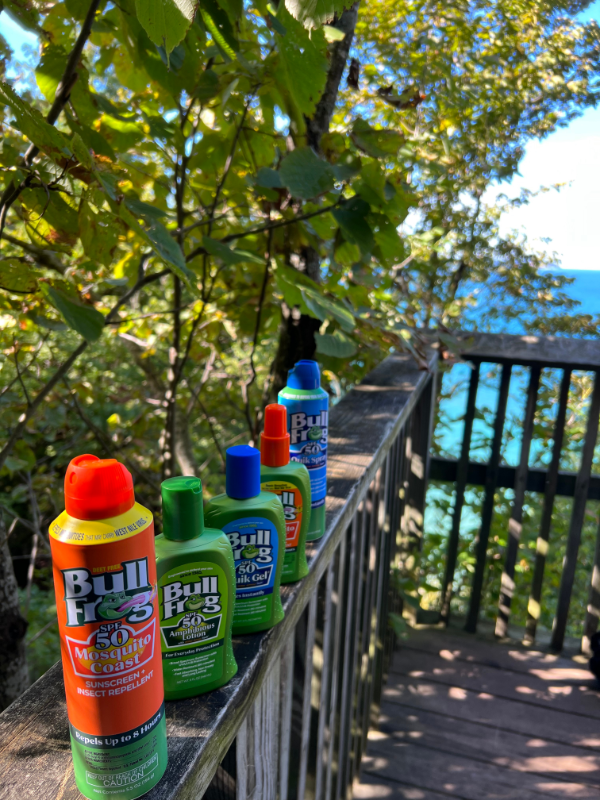
What Is the Difference Between UVA and UVB Rays?
What are UVA rays? What are UVB rays? Knowing the difference could save your skin. It's even more important that your sunscreen knows the difference.
Being "sun smart" is the key to avoiding sun dangers. While sunburns, blistering, and peeling are painful enough to inspire us all to practice sun safety, the stakes are actually much higher than just having a vacation ruined by a bad burn. Exposure to the sun's ultraviolet (UV) radiation increases the risk for a deadly form of skin cancer called melanoma. Most sunscreens aren't protecting us against all forms of UV rays. More on that in a minute!

According to the Melanoma Research Foundation, skin cancer is the most common form of cancer in the United States. More than 197,000 Americans are expected to be diagnosed with melanoma this year alone. Melanoma can develop anywhere on the body. While the eyes, lips, scalp, nails, feet, mouth, and other high-exposure areas of the body are most vulnerable, a skin cancer diagnosis in an area that typically remains covered is not uncommon.
Melanoma affects people of all ages, races, and income levels. In fact, roughly 400 children are diagnosed with melanoma each year. That's why sunscreen that protects the whole family is essential.
You can't learn the ABCs of staying protected against UV rays until you learn the difference between UVA and UVB rays. Far too many people aren't covering all their bases when it comes to long-lasting protection against both forms of harmful UV rays. Take a look at what everyone needs to know about the difference between UVA and UVB rays.
What Is the Difference Between UVA and UVB?
UVA and UVB rays become important when looking at sun protection beyond SPF (sun protection factor). There's no question that using sunscreen with SPF 30 to SPF 50 is the smart way to go. However, SPF doesn't tell the whole story. It's also essential to make sure any sunscreen you're using offers broad-spectrum protection.
Broad-spectrum protection means that sunscreen offers protection against both UVA and UVB exposure. While nearly all sunscreens on the market offer UVB protection, very few provide UVA protection. UVA and UVB rays have differing strengths and differ in how deeply they can penetrate different layers of your skin. The one thing that both have in common is that they cause damage to DNA in skin cells, leading to mutations linked to everything from skin cancer to premature aging. Next, consider why protection against these two different forms of solar radiation is crucial.

What Are UVB Rays?
UVB rays are generally what the public thinks of when talking about "UV" rays. The SPF label on sunscreen is actually referencing the level of UVB protection offered. SPF tells the customer how long the sun's radiation would take to redden skin versus time without sunscreen.
UVB rays have shorter wavelengths compared to UVA rays, and these are the rays associated with skin burning. While UVB rays can damage the skin during any season of the year, rays are generally more intense during the period from spring to fall. However, factors ranging from high altitudes to reflective surfaces can increase UVB rays' intensity during unexpected times of the year. UVB protection is 100% necessary in every climate during the entire year. One "bright spot" is that UVB rays do not penetrate glass. The same can't be said for UVA rays.
What Are UVA Rays?
Capable of penetrating clouds, clothing, and glass, UVA rays account for roughly 95% of the planet's UV radiation. Unlike UVB rays, UVA rays maintain the same strength level all year long. Each person's cumulative exposure to UVA rays throughout a lifetime is significant.
While UVA rays are shorter and less intense than UVB rays, they can penetrate the skin more deeply. Exposure to UVA rays leads to genetic damage to cells in the skin's outer layers, and this exposure can lead to skin damage, premature aging, and skin cancer. Unfortunately, UVA rays are the rays used in artificial tanning beds. Growing awareness regarding the dangers of UVA rays has caused many people to avoid tanning beds, practice safe sun practices, and begin using broad-spectrum sunscreen in recent years.

You Can Still Love the Sun Without Loving UVB and UVB Rays
It doesn't have to be "lights out" on fun outdoor activities just because you've learned about the dangers of UV exposure. Everyone can drastically reduce the likelihood of developing skin cancer by protecting skin against UV radiation. A dependable broad-spectrum sunscreen offering long-lasting UVB and UVB protection is essential for safely enjoying the sun all year.
Families trust Bullfrog sunscreen and insect repellent for consistent protection against UVB and UVA rays in a smooth, easy-to-apply formula that feels great on the skin. The truth is that we're more likely to remember to wear sunscreen if it's comfortable and soothing. That's why Bullfrog uses a fast-absorbing, non-greasy, and long-lasting formula enriched with antioxidants and soothing plant extract. Available as quick sprays, lotions, gels, and two-in-one insect repellents, Bullfrog sunscreen products use exclusive Water Armour Tech technology to provide 80 minutes of water resistance per application. Order Bullfrog UVB/UVA sunscreen today!
